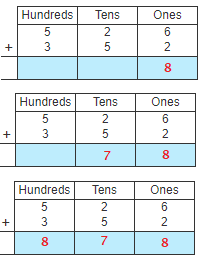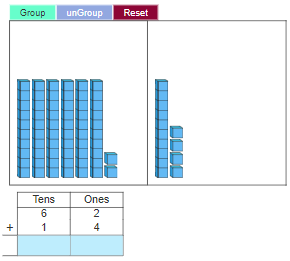
Adding 2 and 3 digit Numbers Without Regrouping
Concept
The addition is a process of adding two or more items together. In math, addition is the method of calculating the total of two or more numbers to know the sum of the numbers. It is a primary arithmetic operation.
The addition that involves the sum of digits less than or equals to 9 at each place value is called addition without regrouping.
Rules
1. Place the addends one on top of the other so that the place values fall in the same columns.
2. Add each column together separately, starting with the one’s place.
3. The sums go below each column, underneath the line.
Example
Add.
526 + 352
Solution
Practice Adding 2 and 3 digit Numbers Without Regrouping

Addition – a mathematical operation in which two or more numbers are combined to equal a greater number.
Addend – a number which is added to another.
Sum – Final answer of the addition.
Regrouping is the process of making groups of tens when adding or subtracting two digit numbers (or more) and is another name for carrying and borrowing.






